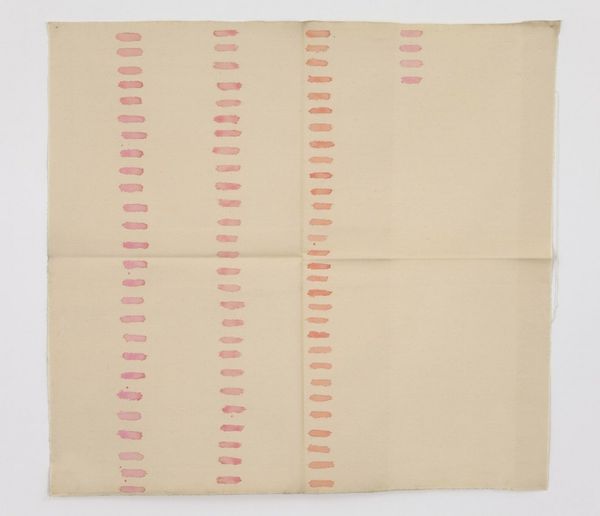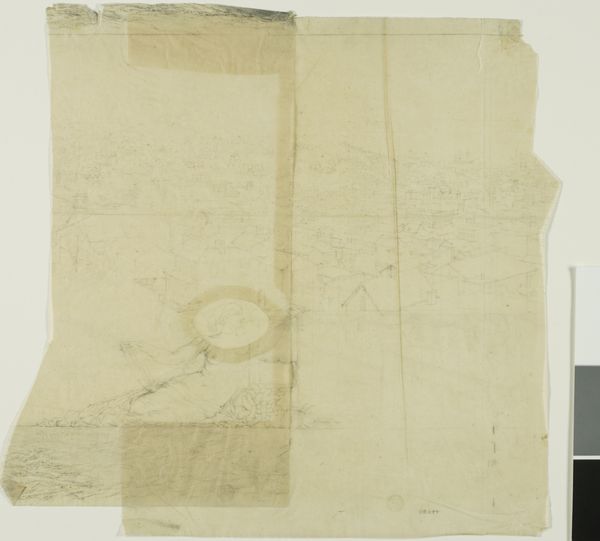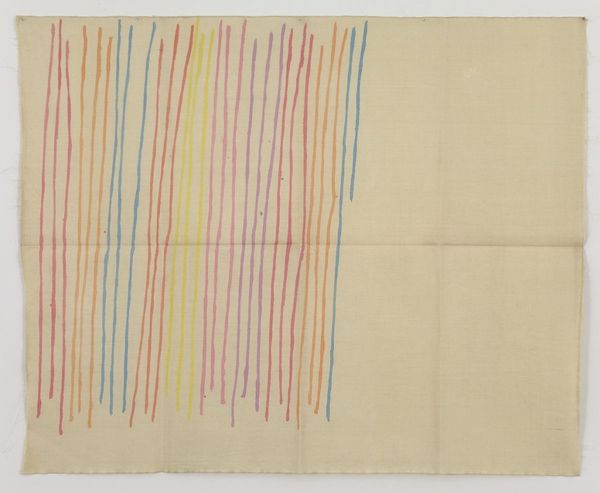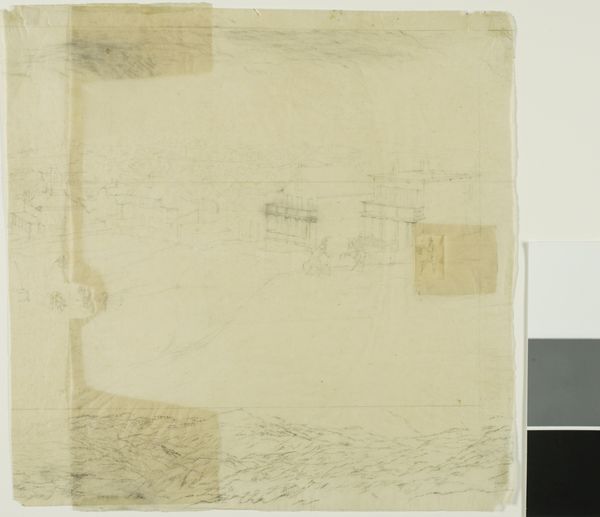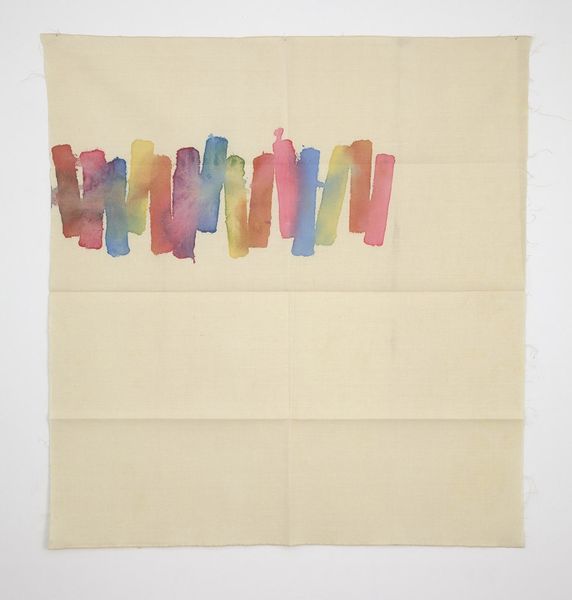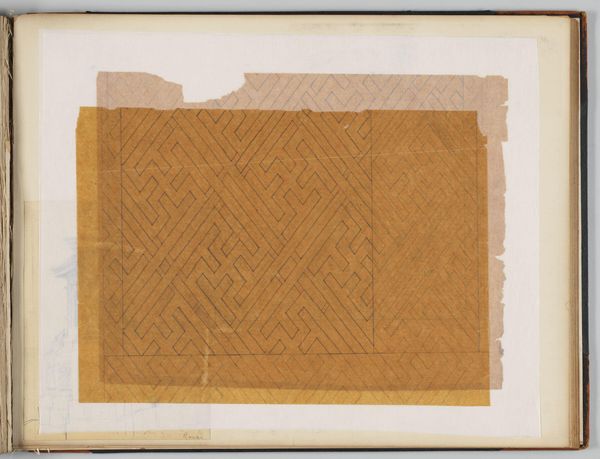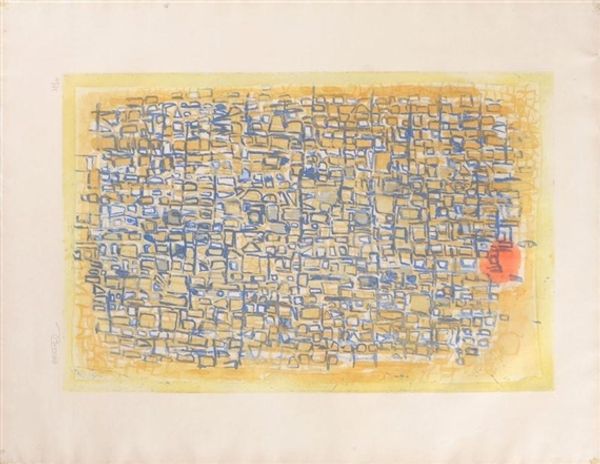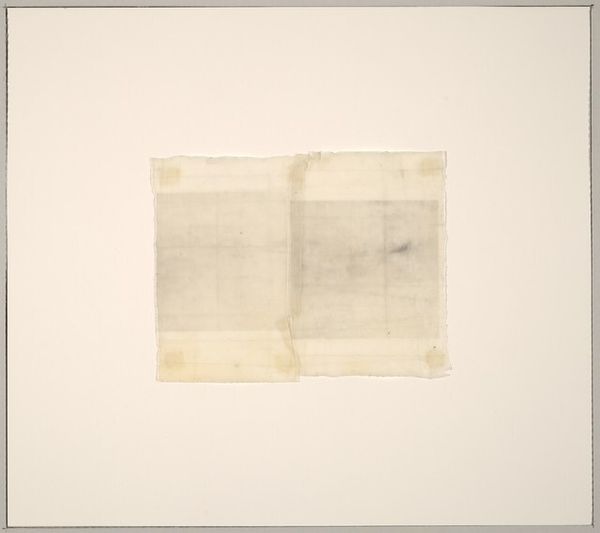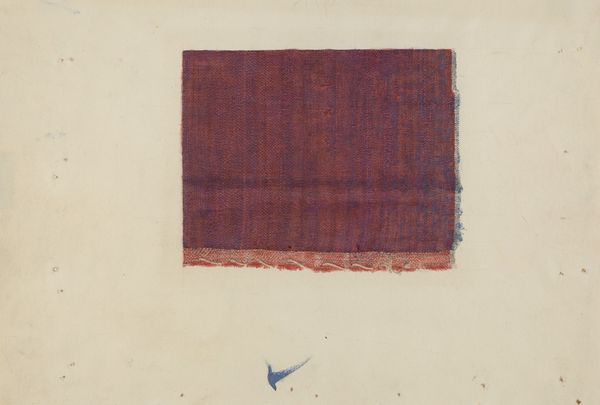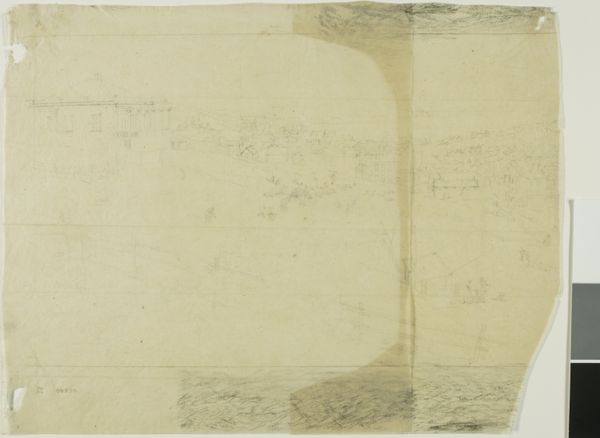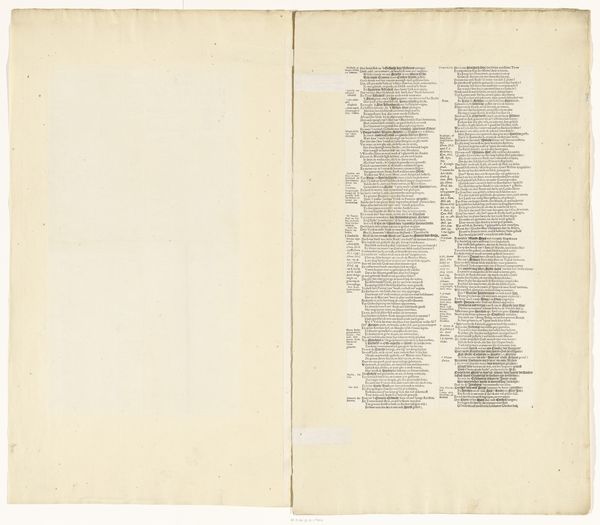
mixed-media, textile, watercolor
#
abstract-expressionism
#
mixed-media
#
water colours
#
textile
#
watercolor
#
geometric
#
abstraction
#
line
#
watercolor
Copyright: Giorgio Griffa,Fair Use
Curator: Welcome. Before us is Giorgio Griffa’s “Spugne,” created in 1969. It employs a mixed-media approach, combining watercolors and textile. What is your immediate take on this artwork? Editor: Stark, deliberately unfinished. There’s something elemental about the unprimed canvas and those roughly applied daubs of color. It almost feels more like a process artifact than a finished painting. Curator: The restrained palette and the geometric shapes definitely speak to the artist's minimalist tendencies, yet those imperfect squares, those raw edges… There’s an undeniable human element in its imperfections. Perhaps evoking memory. Editor: It strikes me how the visible weave of the canvas anchors it. He allows the materiality of the textile itself to remain present; its manufacture is unhidden. It prompts questions about the labor involved. Is it an elevation or a rejection of craft? Curator: Intriguing point. Traditionally, geometrical forms carry symbolic weight – the square as earthly and grounded. But here, freed from rigid lines and precise rendering, are the conventional associations unsettled, made ambiguous? I consider that there's a feeling of floating islands; what could that evoke? Editor: Perhaps. I'm more taken with the pigment itself. Those slightly muted blue and ochre tones— their earthy nature further connecting the work to the physical world of dyes, fabrics, and the historical means of applying them. No illusionism. Only the bluntness of material truth. Curator: And is that honesty also visible in the "incomplete" feeling? The corner that seems unfinished or dissipating might serve as an emotional doorway. Consider its impact psychologically. The artist’s choice evokes quiet contemplation, would you agree? Editor: Contemplative for certain, but I find the material fact the artist presents as being a clear and unavoidable thing, and it invites scrutiny of value, both literally, and figuratively. It has to exist outside the traditions, deliberately, to be considered "art." Curator: That refusal to fully commit is where its strength resides, perhaps. He creates an open system – a suggestion of form rather than a declaration. Something that, while appearing simple, contains layers of consideration. Editor: Exactly. The art here is about labor and unrefined thought. So this work reveals a little more than the canvas at first suggests, but as we see, less so about beauty than it asks of labor. Curator: A lovely contrast. Thank you. Editor: Likewise. A new view to have, as always.
Comments
No comments
Be the first to comment and join the conversation on the ultimate creative platform.
